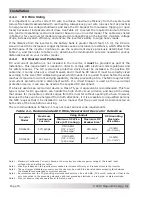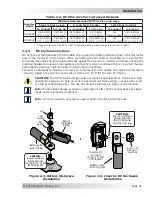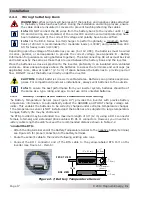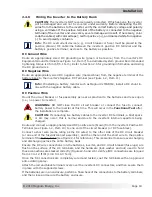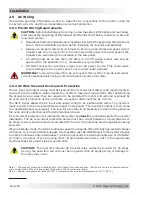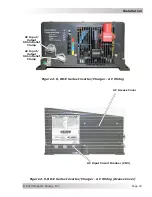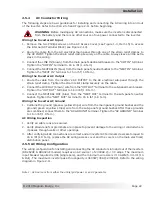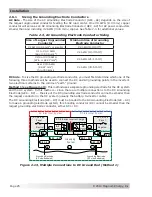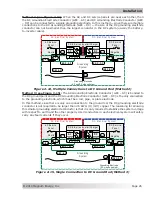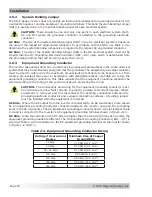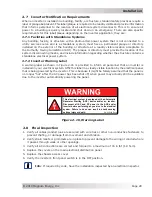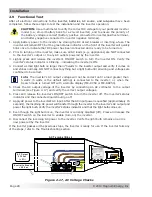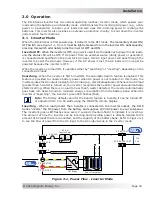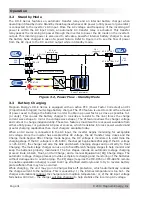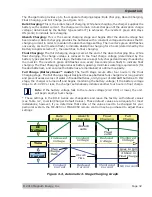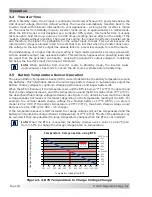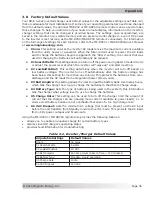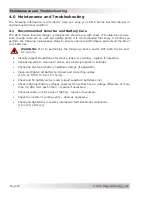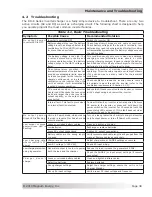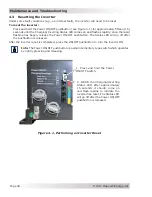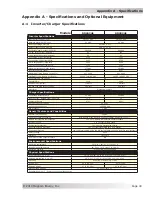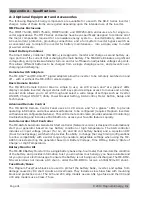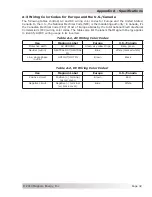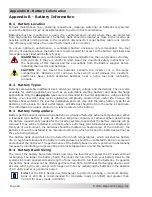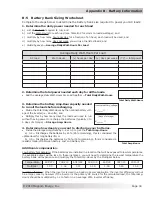
©
2010 Magnum Energy, Inc
Page 29
Installation
8. Even though the light bulb is on, the inverter is currently disabled (off). Press and release the
ON/OFF switch on the inverter to enable (turn-on) the inverter.
9. Disconnect the incoming AC power to the inverter. Verify the light bulb remains on and is
now powered by the inverter.
If the inverter passes all the previous steps, the inverter is ready for use. If the inverter fails any
of the steps, refer to the Troubleshooting section.
Figure 2-17, AC Voltage Checks
A C T erm in al B lo ck
3 0
30
B L U E
B L U E
B R O W N
B R O W N
N eu tral to G ro u n d
< 0.5 V ac
A C O u tp u t
230 V ac
(
±
5% )
Info:
The inverter’s AC output voltage will not be correct until a load greater than
5 watts (5 watts is the default setting) is connected to the inverter; or, when the
Search mode is turned OFF with a remote display (ME-RC50 or ME-ARC50).
5. Check the AC output voltage of the inverter by connecting an AC voltmeter to the output
terminals (see Figure 2-17) and verify the correct output voltages.
6. Press and release the inverter’s ON/OFF switch to turn the inverter off. The inverter’s status
indicator and the connected load should go off.
7. Apply AC power to the inverter’s AC input. After the AC input power is quali
fi
ed (approximately 15
seconds), the incoming AC power will transfer through the inverter to the inverter’s AC output and
power the light bulb. Verify the inverter’s status indicator and that the light bulb comes on.
2.9 Functional
Test
After all electrical connections
to the inverter, batteries, AC source, and sub-panel
have been
completed, follow these steps to test the installation and the inverter operation.
CAUTION:
Use a multimeter to verify the correct DC voltage for your particular inverter
model (i.e., 24-volt battery bank for a 24-volt inverter), and to ensure the polarity of
the battery voltage is correct (battery positive connected to inverter positive terminal,
and battery negative connected to inverter negative terminal).
1. Apply battery power to the inverter by closing the DC circuit breaker or inserting a fuse. The
inverter will remain OFF, but the green status indicator on the front of the inverter will quickly
blink once to indicate that DC power has been connected and is ready to be turned on.
2. Prior to turning on the inverter, make sure all AC loads (e.g., appliances) are NOT connected
to the inverter’s output or to any AC outlets powered by the inverter.
3. Lightly press and release the inverter’s ON/OFF switch to turn the inverter ON. Verify the
inverter’s status indicator is blinking – indicating the inverter is ON.
4. Connect a small light bulb
no larger than 75 watts
to the inverter output and verify it comes on
and shines normally. DO NOT connect anything but a light bulb until all wiring and voltages are
con
fi
rmed to be correct.

